Click on images to enlarge
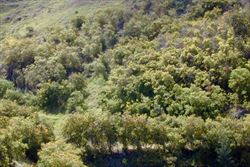
infestation on a hillside in Hawaii (Photo: Forest and Kim Starr, USGS)
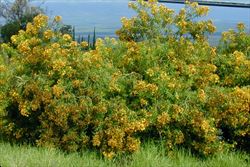
habit (Photo: Forest and Kim Starr, USGS)
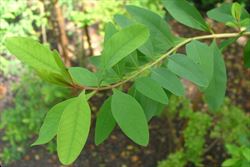
younger paired leaves (Photo: Sheldon Navie)
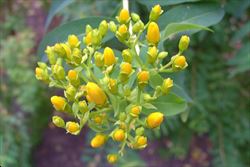
cluster of flower buds (Photo: Sheldon Navie)

close-up of flowers (Photo: Forest and Kim Starr, USGS)
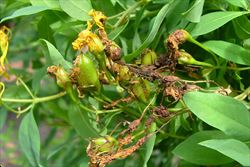
old flowers and immature fruit (Photo: Sheldon Navie)

mature fruit (Photo: Forest and Kim Starr, USGS)
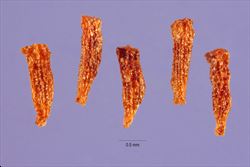
close-up of seeds (Photo: Steve Hurst at USDA PLANTS Database)
Scientific Name
Hypericum canariense L.
Family
Clusiaceae (Queensland, New South Wales, the ACT, Victoria, Tasmania, Western Australia and the Northern Territory)Guttiferae (South Australia)
Common Names
Canary hypericum, Canary Island hypericum, Canary Island St. John's wort, Canary Island St. Johnswort, Canary-Isles St John's-wort
Origin
Native to the Canary Islands.
Naturalised Distribution
Occasionally naturalised in southern Australia (i.e. in the coastal districts of south-western Western Australia and near Melbourne in southern Victoria).
Naturalised overseas in New Zealand, south-western USA (i.e. California) and Hawaii.
Notes
Canary Island St. John's wort (Hypericum canariense) is occasionally grown in botanical gardens and as a garden ornamental in southern Australia. It has escaped cultivation in Western Australia and Victoria, and is a potential weed of coastal environs, creekbanks, riparian areas, wetlands and grasslands in the temperate regions of Australia. This species is a serious threat to native vegetation due to its competitive ability, rapid growth rate, tolerance to a wide range of conditions and high annual seed production. It is also capable of invading relatively undisturbed vegetation.
Three infestations of this species are known to exist in the coastal districts of southern Western Australia (i.e. at Bremer Bay, Lower King and Bridgetown) and a single infestation has been reported at Flinders in Victoria.
Canary Island St. John's wort (Hypericum canariense) is also becoming invasive in California and Hawaii. In California, where it is currently of greatest concern, it has invaded natural areas in the coastal parts of San Mateo, Santa Barbara and San Diego counties. In these areas it appears to out-compete and exclude nearly all other vegetation, and can comprise between 90 to 100% of the vegetation cover. The only native plants that persist after Canary Island St. John's wort (Hypericum canariense) has invaded are trees and shrubs in the overstorey, with virtually all under-storey species being displaced.

